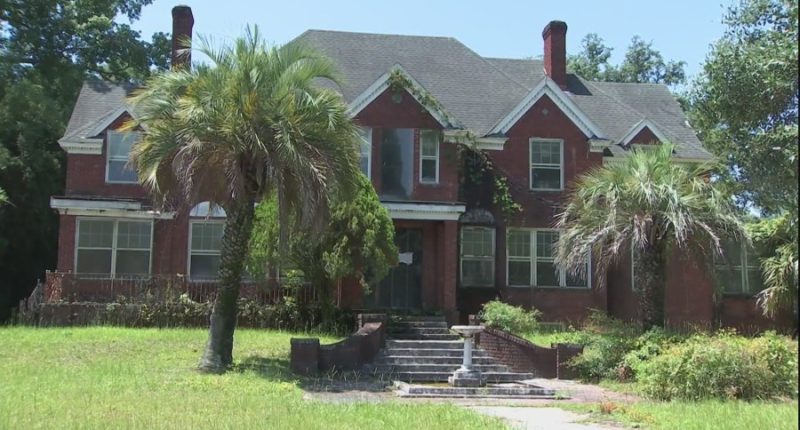Share this @internewscast.com

SAVANNAH, Ga. () — Concerned residents and historians are seeking clarity about the future of a historic home located in Savannah’s Liberty City neighborhood. News 3 is gathering information to address these concerns.
A condemned sign is prominently displayed on the Collier house on Mills B Lane Boulevard. Despite this, local advocates for historic preservation are eager to save the building from being demolished, emphasizing its historical significance.
The house is situated in the district of Alderman Estella Shabazz, PhD. According to a city spokesperson, there are case files associated with the property that date back to 2007.
The vacant building violates multiple city codes, and the owner faces up to $40,000 in fines.
That spokesperson for the City of Savannah said,
“The most recent active case was initiated on May 17, 2021. Notice of violations were issued to the property owner of record via certified mail, advertisements, and postings at the property. Contact was made with the owner’s son, who had inherited the property. Despite multiple notices over the years, no corrective action has been taken with the property. Several additional violations have been issued since 2021.
Ownership of the property was quitclaimed from Carrie Addison to Curtis Polite in 2021. It passed to three heirs in 2014 when Curtis Polite passed. A hearing was held on June 16. The judge continued the case until July requiring the heirs to submit legal documentation regarding Mr. Polite’s will.”
Alderwoman Shabazz called the home a monument and a jewel in Liberty City that should be preserved.
According to the Historic Savannah Foundation, the home was built in 1946 for Dr. Henry Collier Jr. The doctor used the house as collateral to free civil rights activists from jail and allowed them to stay at the home.
“It is a beautiful example of African American history and herstory. The structure is still there,” Shabazz said. “It needs to be put back together and be renovated so that a well-deserving family can move into that house and just make sure the history of that house can move forward.”
The property remains in violation, but demolition has not been scheduled.
Due to the historic importance of the house, city staff told News 3 the Planning and Urban Design Department has been coordinating with outside nonprofits and exploring any opportunities available to stabilize, preserve, and possibly restore the property.
Collier Family History from the City of Savannah’s Municipal Archives
Collier, Jr., a native of Savannah, was from a family of doctors. He is the oldest of eight children of Dr. Henry Morgan Collier, Sr. and Annie Gillard Collier.
His brother, Charles Collier and his uncle Nathaniel Collier, practiced dentistry in Savannah on West Broad Street near the Savannah Pharmacy, according to the Archives.
Harold Collier, a younger brother, was also a physician. After obtaining his medical degree
from Meharry Medical College in 1942, Henry Collier, Jr. opened his practice in the upstairs building of his father’s practice at 705 West Broad Street, also known as the Collier Building.
Archives show Collier, Jr. served as chief of staff at Charity Hospital in 1959. He was a physician at Savannah State College, now Savannah State University. He practiced medicine in Savannah for more than forty years. He was a lifetime member of the N.A.A.C.P., working on the education and executive committees of the local branch.
According to Savannah Archives, Dr. Collier was an active member of many civic organizations such as the West Broad Street YMCA, May Street Recreation Center, Coastal Empire Council of Boy Scouts of America, Mid-Town Chamber of Commerce, Savannah Port Authority and the Savannah Development Authority.
Collier was a member of the American Medical Association, as well as a member and former president for the National Medical Association and the South Atlantic Medical Society.
Photographs of Dr. Collier, Jr. are among the W. W. Law Photograph Collection. It is possible that there is correspondence from Dr. Collier in the N.A.A.C.P. papers.









